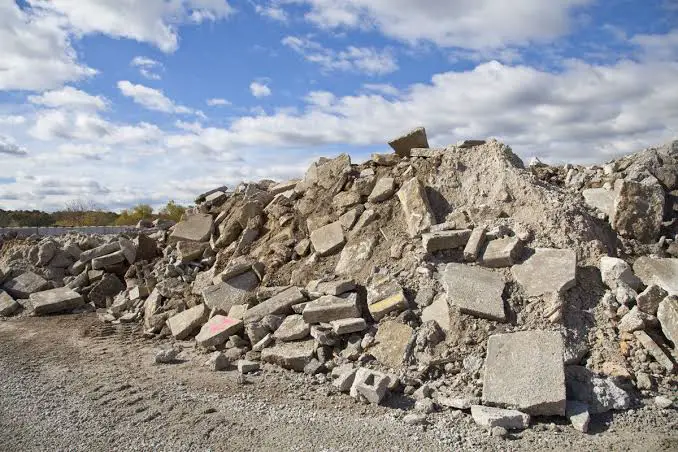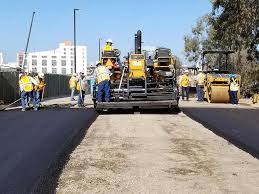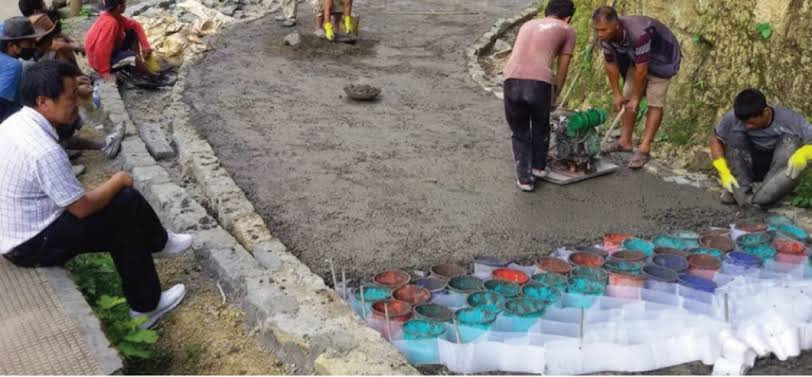Asphalt Wastes can be turned into something useful for building new things. Instead of throwing away old asphalt, we can change it into smaller pieces called aggregate. This aggregate is like little rocks that can be used in making new roads and buildings.
When asphalt gets old or damaged, it’s usually just thrown away. But if we convert it into aggregate, we can save resources and help the environment. Instead of mining for new rocks, we can use the old asphalt that’s already there.
The process of turning asphalt waste into aggregate is not too complicated. First, the old asphalt is broken down into smaller pieces. Then, it’s cleaned to remove any dirt or debris. After that, it’s sorted into different sizes depending on what it will be used for.
Once the asphalt waste has been turned into aggregate, it can be used in all sorts of construction projects. It can be mixed with other materials to make concrete or used as a base for roads and sidewalks. By using recycled asphalt waste, we can reduce the amount of new materials we need to use, which saves money and reduces waste.
Not only is converting asphalt waste into aggregate good for the environment, but it’s also good for the economy. Instead of spending money on new materials, construction companies can save money by using recycled asphalt. This can help create jobs and stimulate the economy.
Overall, converting asphalt waste into aggregate is a win-win solution. It helps the environment by reducing waste and conserving resources, and it helps the economy by saving money and creating jobs. So next time you see old asphalt being thrown away, remember that it could be turned into something useful for building new things.
Read Also: Tips for Maintaining a Clean Garbage Disposal
Types of Recyclable Asphalt Wastes and their Uses

There are different types of recyclable asphalt wastes, each with its own potential uses in construction and road maintenance.
1. Milled Asphalt: When old asphalt roads are resurfaced or repaired, the top layer is often removed using a milling machine. This milled asphalt can be recycled and used as aggregate in new asphalt mixtures. It provides stability and durability to the new road surface, reducing the need for new materials.
2. Reclaimed Asphalt Pavement (RAP): RAP is a mixture of old asphalt pavement material that has been crushed or pulverized into smaller pieces. It can be used as a base or sub-base material in new road construction projects. RAP helps conserve natural resources by reducing the demand for virgin aggregates and asphalt binder.
3. Asphalt Roofing Shingles: Asphalt roofing shingles are commonly used on residential and commercial buildings. When these roofs reach the end of their service life, the shingles can be recycled and used in hot mix asphalt (HMA) or cold mix asphalt (CMA) production. Recycling shingles reduces landfill waste and conserves valuable resources.
4. Asphalt Millings: Asphalt millings are the result of grinding up old asphalt surfaces, such as parking lots or driveways. They can be reused as a cost-effective alternative to traditional gravel or stone aggregate in road construction and repair projects. Asphalt millings provide good compaction and drainage properties.
5. Asphalt Pavement Scrapings: During road maintenance activities, such as pothole patching or crack sealing, small amounts of asphalt pavement may be removed. These scrapings can be collected and recycled for use in various asphalt mixtures, reducing waste and lowering construction costs.
Recycling these different types of asphalt wastes, we can reduce the environmental impact of road construction and maintenance while conserving valuable resources. Additionally, using recycled asphalt materials can help lower project costs and promote sustainability in the construction industry.
How to Convert Asphalt Wastes into Aggregate for New Construction
Converting asphalt wastes into aggregate for new construction involves several steps:
1. Collection and Transportation: Old asphalt materials are collected from road maintenance projects, construction sites, or recycling centers. They are then transported to a facility equipped for processing.
2. Breaking Down: At the processing facility, the collected asphalt wastes are broken down into smaller pieces using heavy machinery like crushers or shredders. This step reduces the asphalt into manageable sizes for further processing.
3. Cleaning and Sorting: The broken-down asphalt pieces are cleaned to remove any contaminants like dirt, debris, or vegetation. Then, they are sorted based on size and quality. Larger pieces may be further crushed or screened to achieve the desired aggregate size.
4. Quality Control: Quality control measures are implemented to ensure that the recycled asphalt aggregate meets the required specifications for construction use. This may include testing for size distribution, gradation, and asphalt content.
5. Storage and Stockpiling: The processed asphalt aggregate is stored in stockpiles at the facility or transported to storage yards. Proper stockpiling techniques are employed to prevent contamination and maintain the quality of the aggregate.
6. Transportation to Construction Sites: The recycled asphalt aggregate is transported to construction sites where it will be used in various construction projects, such as road paving, base layers, or drainage applications.
7. Integration into Construction Materials: At the construction site, the recycled asphalt aggregate is integrated into construction materials like asphalt mixtures or concrete. It may be combined with other aggregates, binders, and additives to meet specific project requirements.
8. Application and Compaction: The construction materials containing recycled asphalt aggregate are applied to the desired area and compacted using heavy rollers or compactors. Proper compaction ensures the stability and longevity of the constructed infrastructure.
Read Also: Practical Steps to Convert Concrete Wastes into Aggregate for New Construction
The Benefits of Converting Asphalt Wastes into Aggregate for New Construction

Converting asphalt wastes into aggregate for new construction offers several significant benefits:
1. Resource Conservation: By recycling asphalt wastes, we reduce the need for virgin materials such as natural aggregates and asphalt binders. This conserves valuable natural resources and reduces the environmental impact of mining and extraction processes.
2. Waste Reduction: Recycling asphalt wastes helps divert materials from landfills, reducing the amount of waste that ends up in disposal sites. This contributes to waste management efforts and helps mitigate the environmental burden of landfilling.
3. Energy Savings: The process of converting asphalt wastes into aggregate typically requires less energy compared to producing new materials from scratch. This results in lower energy consumption and greenhouse gas emissions associated with material extraction, processing, and transportation.
4. Cost Savings: Using recycled asphalt aggregate in construction projects can lead to cost savings for contractors and project owners. Recycled materials are often more affordable than virgin alternatives, helping to lower overall project costs while maintaining quality and performance standards.
5. Improved Infrastructure Performance: Recycled asphalt aggregate is a durable and high-quality material that can enhance the performance and longevity of constructed infrastructure. It provides excellent load-bearing capacity, stability, and resistance to weathering and deterioration.
6. Sustainability: Incorporating recycled materials into construction practices promotes sustainable development and reduces the industry’s carbon footprint. It aligns with goals of resource efficiency, waste reduction, and environmental stewardship, contributing to a more sustainable built environment.
7. Regulatory Compliance: Many jurisdictions encourage or require the use of recycled materials in construction projects as part of sustainability initiatives or regulatory mandates. Converting asphalt wastes into aggregate helps construction projects comply with these requirements and demonstrate environmental responsibility.
8. Job Creation: Recycling asphalt wastes and integrating them into construction projects can create job opportunities in recycling facilities, construction sites, and related industries. This contributes to economic growth and supports local communities by generating employment opportunities.
Converting asphalt wastes into aggregate for new construction offers a multitude of benefits, ranging from environmental protection and resource conservation to cost savings and economic development. Embracing recycling practices in the construction industry can lead to more sustainable and resilient infrastructure systems for the future.
The Uses and Benefits of Recycled Aggregate for New Construction
Recycled aggregate, derived from various sources such as asphalt wastes, offers numerous uses and benefits for new construction projects:
Uses:
1. Road Construction: Recycled aggregate can be used as a base or sub-base material in road construction projects. It provides stability, durability, and drainage properties, making it suitable for use in both rural and urban roadways.
2. Concrete Production: Recycled aggregate can replace natural aggregates in concrete production, serving as a sustainable alternative. It can be used in various concrete applications, including sidewalks, foundations, and structural elements.
3. Asphalt Mixtures: Recycled aggregate, particularly from asphalt wastes, can be incorporated into asphalt mixtures for road paving and resurfacing. It enhances the performance of asphalt pavements while reducing the demand for virgin materials.
4. Landscaping and Drainage: Recycled aggregate can be used in landscaping projects, such as filling gabion baskets, creating retaining walls, or establishing drainage systems. It provides structural support and helps manage water runoff effectively.
5. Structural Fill: Recycled aggregate can be used as structural fill in construction projects where controlled density and compaction are required. It can be used to fill voids, stabilize embankments, or support underground utilities.
Benefits:
1. Environmental Sustainability: The use of recycled aggregate reduces the need for virgin materials, conserving natural resources and minimizing the environmental impact of mining and extraction activities. It also helps divert construction and demolition waste from landfills, promoting a circular economy.
2. Energy and Cost Savings: Recycling aggregate consumes less energy and incurs lower production costs compared to producing new materials from virgin sources. This results in cost savings for construction projects while reducing greenhouse gas emissions associated with material extraction and transportation.
3. Waste Reduction: Incorporating recycled aggregate into construction projects reduces the volume of waste sent to landfills, alleviating pressure on waste management infrastructure and reducing environmental pollution.
4. Quality and Performance: Recycled aggregate undergoes quality control measures to ensure it meets the required specifications for construction use. When properly processed and integrated into construction materials, recycled aggregate performs comparably to virgin materials in terms of strength, durability, and longevity.
5. Regulatory Compliance: Many jurisdictions have regulations or incentives promoting the use of recycled materials in construction projects as part of sustainability initiatives. Using recycled aggregate helps construction projects comply with these requirements and demonstrate environmental responsibility.
6. Community Benefits: Recycling aggregate supports local economies by creating jobs in recycling facilities, construction sites, and related industries. It also fosters community engagement and awareness of sustainable construction practices.
Overall, the uses and benefits of recycled aggregate for new construction contribute to a more sustainable, cost-effective, and resilient built environment, aligning with goals of environmental stewardship and resource efficiency.
The Challenges of Converting Asphalt Wastes into Aggregate for New Construction and their Solutions
Converting asphalt wastes into aggregate for new construction presents several challenges, along with potential solutions to address them:
Challenges:
1. Contamination: Asphalt wastes may contain contaminants such as dirt, debris, or other materials that can affect the quality of the recycled aggregate.
2. Variable Composition: Asphalt wastes can vary in composition, including different types of asphalt binders and aggregate sizes, which can impact the properties of the recycled aggregate.
3. Quality Control: Ensuring the quality and consistency of the recycled aggregate, including particle size distribution, gradation, and asphalt content, can be challenging during the processing and production stages.
4. Market Demand: The demand for recycled aggregate may fluctuate depending on market conditions, project requirements, and regulatory incentives, affecting the viability of recycling operations.
5. Logistics and Transportation: Transporting asphalt wastes to recycling facilities and delivering recycled aggregate to construction sites can involve logistical challenges, including transportation costs and environmental considerations.
Solutions:
1. Pre-Sorting and Cleaning: Implementing pre-sorting and cleaning processes at the collection stage can help remove contaminants from asphalt wastes, improving the quality of the recycled aggregate.
2. Standardization: Developing standardized specifications and guidelines for processing recycled asphalt wastes can help ensure consistency in the composition and properties of the recycled aggregate.
3. Quality Assurance: Implementing quality control measures, such as regular testing and monitoring of recycled aggregate production processes, can help maintain the quality and performance of the recycled material.
4. Market Development: Collaborating with stakeholders, including government agencies, contractors, and industry associations, to promote the use of recycled aggregate in construction projects and create a stable market demand.
5. Efficient Transportation: Optimizing transportation routes, utilizing eco-friendly transport options, and exploring regional partnerships can help reduce transportation costs and environmental impacts associated with moving asphalt wastes and recycled aggregate.
Frequently Asked Questions (FAQs) About How to Convert Asphalt Wastes into Aggregate for New Construction
1. Q: What is the process of converting asphalt wastes into aggregate for new construction?
A: The process typically involves collecting, breaking down, cleaning, sorting, and quality controlling the asphalt wastes to produce recycled aggregate suitable for construction use.
2. Q: What are the benefits of converting asphalt wastes into aggregate for new construction?
A: Benefits include resource conservation, waste reduction, energy savings, cost savings, improved infrastructure performance, sustainability, regulatory compliance, and job creation.
3. Q: What are the challenges associated with converting asphalt wastes into aggregate?
A: Challenges include contamination, variable composition, quality control, market demand fluctuations, and logistics and transportation issues.
4. Q: How can contamination of asphalt wastes be addressed during the conversion process?
A: Contamination can be addressed through pre-sorting and cleaning processes to remove contaminants such as dirt, debris, and other materials.
5. Q: How can the quality of recycled aggregate be ensured?
A: Quality control measures, including regular testing and monitoring of production processes, can help maintain the quality and consistency of recycled aggregate.
6. Q: What is the market demand for recycled aggregate?
A: Market demand may vary depending on factors such as project requirements, regulatory incentives, and economic conditions. Collaborating with stakeholders to promote the use of recycled aggregate can help create a stable market demand.
7. Q: What transportation considerations are involved in converting asphalt wastes into aggregate?
A: Efficient transportation routes, eco-friendly transport options, and regional partnerships can help reduce transportation costs and environmental impacts associated with moving asphalt wastes and recycled aggregate.
8. Q: How can stakeholders contribute to the successful conversion of asphalt wastes into aggregate for new construction?
A: Stakeholders can contribute by supporting recycling initiatives, promoting the use of recycled aggregate, implementing quality control measures, and collaborating to address challenges in the conversion process.
Read Also: All You Need to Know About the Painted African Dog

